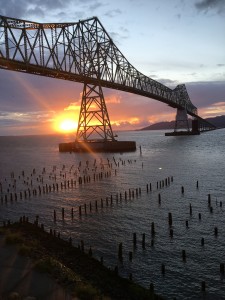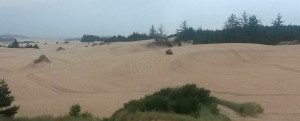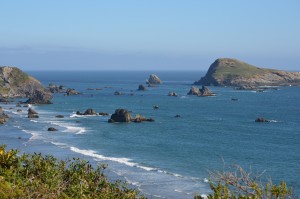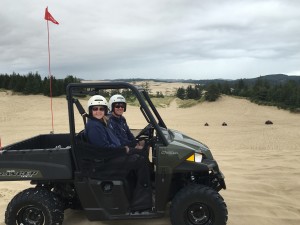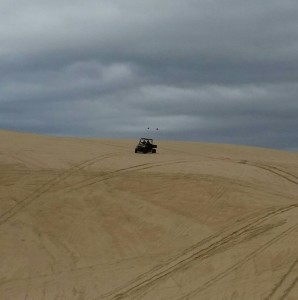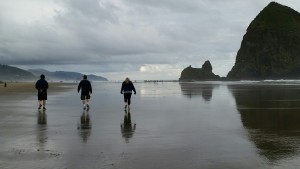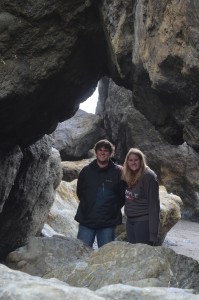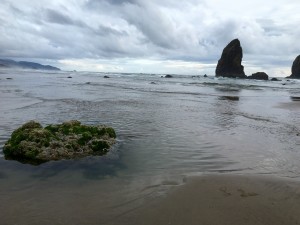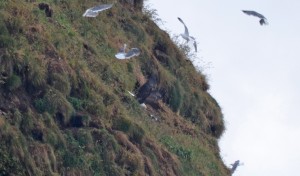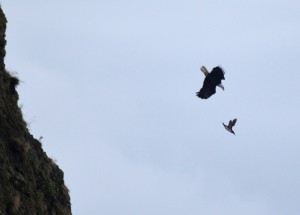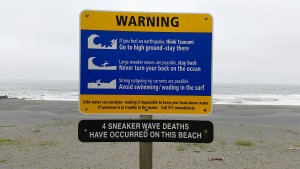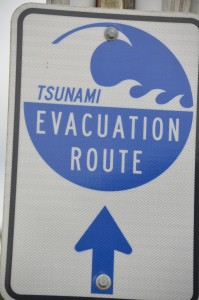Drive north on Highway 101 through Oregon and Washington, and you’ll discover an unspoiled coastline that is rugged, beautiful and rich in history. This region includes miles of high, drifting sand dunes in southern Oregon, and wild rivers that flow through towering coniferous forests to the rocky shorelines of the Pacific Ocean, as you continue north. It’s a land of untamed beaches where seals and sea lions bask, whales migrate just offshore and large rock formations called sea stacks provide habitat for large colonies of sea birds, while standing guard in the crashing surf.
As we entered Oregon from California, we were very surprised to see sand dunes, and big sand dunes they were! Oregon Dunes National Recreation Area is home to the largest coastal sand dunes in North America, at over 40 miles long. Some of the dunes reach 500 feet above sea level. These wind-swept piles of sand are constantly being re-shaped by nature year after year. Since the dunes offer many OHV riding opportunities, we had to give it a go! We rented two, 2-seat dune buggies (side-by-sides), watched the safety video, grabbed our helmets and hit the dunes. Theresa rode shotgun with me and Tyler took the wheel of the other one with Darby. The senior drivers’ pace was a bit slower than the younger ones. After we all rode out to the beach, I dropped Theresa off back at the office and took our buggy out by myself for the last 30 minutes. I was doing fairly well keeping up with my offspring until I got a bit over confident coming down the back side of one of the large dunes. During our orientation, we learned that you can’t always see the sudden drop-offs, called Witch’s Eyes, so you shouldn’t go “screaming down” the back side of a dune until you’ve checked it out first. Oops! Before I could hit the brakes, I found myself flying off a steep sand drift at a rate of speed that was also covered in the video. My landing was not so graceful and I hit with a hard thump and bounced for another 6 feet. I didn’t roll the vehicle, but I came pretty close. My biggest concern was that Tyler and Darby, who were riding close behind me, would do the same-especially with me still sitting there, with my head rattling. They watched the video more closely than their father did, and crested the dune with a little more caution. They drove up to me, asked me if I was ok, and after a brief moment of determining I was still fit to drive, they zoomed off, spinning sand into my buggy! We all agreed-we had a great time running the dunes!
After leaving the sand dunes, we started our trek north. The most noticeable feature along the Oregon and Washington coastlines are the sea stacks. These large rock formations were once part of the coastline, but constant wave action eroded them to the point where they became separated from the mainland. As you round each curve on the highway, these craggy, mini-islands of stone appear in the ocean mist like large sailing ships cruising the coast. Some sit offshore a half-mile or more, but most are within a few hundred yards of the beaches, and if you can find your way down to them, you can usually walk out to many in low tide. Many of these sea stacks were covered with nesting colonies of Tufted Puffins, Common Murres, Pigeon Guillemots, Double-crested, Brandt’s and Pelagic Cormorants and Western Gulls. At one large stack, called the Haystacks, Tyler called us over to show us a Bald Eagle that was aggressively hunting some of the nesting sea birds-alternating between landing near their nests and chasing them through the air. We watched these ‘cat and mouse” games for 15 minutes until finally, we witnessed the eagle successfully grabbing a Common Murre-it was like watching a National Geographic special, live!
A Bald Eagle hunts down a Common Murre on Haystack Rock, in Oregon
Two signs you don’t see on the East Coast-it took me a few minutes to figure out what sneaker waves were. Once I understood, I put my sneakers back on my feet!
The crashing surf along the Pacific Coastline creates some very cool, natural phenomena in the rocky shorelines, along with many tide pools waiting to explore. We made a point of stopping at a few of these sites for some short hikes out to these rocky beaches. You have to be careful while stepping along on the wet, slippery rock outcroppings that have been carved out by the pounding surf. One slip, and you can go down pretty quick on the jagged rock. But, these were truly full “sensory walks” as we slowly made our way out in the light drizzle and cool mist to gaze at the Pacific Ocean. The combination of seeing these wild, rocky shorelines, smelling the salt air, hearing the sounds of the crashing waves and feeling the moist spray of the ocean on our faces, is something we will not soon forget. These turned out to be some of our most enjoyable walks. In one location, nicknamed Thor’s Well, a large hole has formed in the rocks at the edge of the water. As the waves come crashing in, the sea water disappears into this large, natural well. It’s really fascinating to see, but can be very dangerous if you get too close, since it can literally pull you into the watery crevice, where you can easily drown. Of course we had to venture out to the edge to take a closer look, along with several other people!
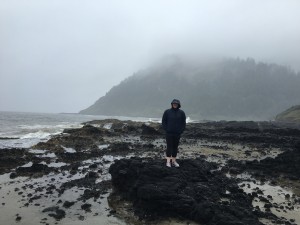
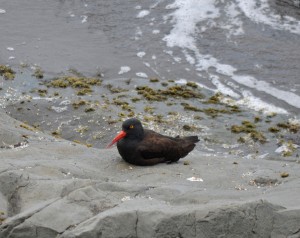 A Black Oystercatcher sits on a rock along the Oregon Coast
A Black Oystercatcher sits on a rock along the Oregon Coast
Click here to see Thor’s Well in action: 20160623_214730000_iOS
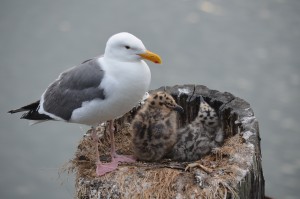
Living on the east coast, we don’t see these types of wild, rocky shores, unless you travel north to the coast of Maine. But even that area doesn’t match the Pacific Coastline, with its lofty sea stacks, coastal wildlife, drifting sand dunes and beautiful forests of tall pines, firs and cedars. It was one of our favorite areas during our vacation, and a region we would like to return to, to explore further!
